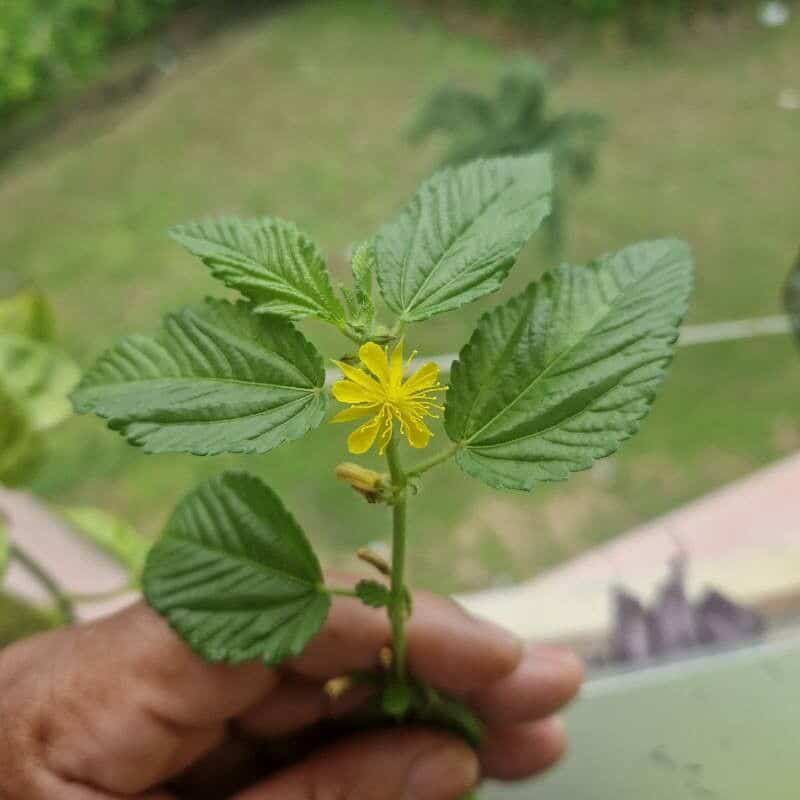Propagating Corchorus hirtus: A Gardener’s Guide to the Jew’s Mallow
Introduction
Corchorus hirtus, commonly known as Jew’s Mallow, is a relatively underappreciated yet fascinating annual herb belonging to the Tiliaceae family. Known for its hairy leaves and small, yellow flowers, this plant boasts both ornamental and potentially medicinal value. While not yet a mainstream garden favorite, its unique characteristics and adaptability are starting to garner attention among gardeners interested in less-common species. Its propagation, however, presents certain challenges, making success all the more rewarding.
Seed Germination:
Currently, there are no known reliable methods for seed germination propagation of Corchorus hirtus. While seeds may be produced, their germination rate is reportedly very low, and successful germination under typical horticultural conditions remains undocumented. Further research is needed to determine optimal germination protocols, potentially involving pre-treatment techniques like scarification or stratification.
Cuttings:
Cuttings offer a more promising route to propagating Corchorus hirtus.
- Challenges: The success rate may depend on the timing (taking cuttings from actively growing shoots), the use of rooting hormone, and maintaining high humidity levels to prevent desiccation. Specific requirements for rooting hormone concentration and humidity levels haven’t been widely documented and will necessitate experimentation.
- Practical Tips: Take semi-hardwood cuttings (approximately 4-6 inches long) in late spring or early summer from healthy, actively growing stems. Remove lower leaves, dip the cut ends in rooting hormone, and plant them in a moist, well-draining propagation mix, such as a peat-perlite blend. Cover with a clear plastic dome or bag to maintain high humidity. Provide bright, indirect light and regularly mist the cuttings to keep them moist.
- Rewards: Cuttings propagation offers a reasonably quick method to obtain genetically identical plants to the mother plant, preserving desirable traits. This is particularly useful if you have a particularly robust or attractive specimen.
Division:
Division is not a feasible method for propagating Corchorus hirtus as it is an annual plant and does not develop the rhizomatous or clumping growth habit necessary for division.
Tissue Culture:
Tissue culture offers a theoretically viable but complex method for propagating Corchorus hirtus.
- Challenges: Establishing sterile conditions and developing a suitable growth medium are crucial. The specific hormonal requirements for successful shoot proliferation and rooting of Corchorus hirtus are yet to be established and would require significant laboratory expertise and experimentation.
- Practical Tips: This technique is best left to specialized laboratories or researchers experienced in plant tissue culture. The process involves sterilizing plant material, inoculating it onto a growth medium containing specific plant hormones, and then subculturing the resulting shoots and roots onto different media to promote growth.
- Rewards: Tissue culture allows for the rapid production of a large number of genetically identical plants, particularly useful for conservation or large-scale propagation.
Conclusion:
Propagating Corchorus hirtus presents unique challenges. While seed propagation remains unreliable, cuttings offer a more promising approach, albeit one requiring patience and attention to detail. Tissue culture holds potential for large-scale production but necessitates specialized skills and equipment. The relatively low success rate across most methods underscores the unique satisfaction derived from successfully cultivating this plant. The challenges, however, should not deter aspiring propagators. Experimentation, meticulous record-keeping, and perseverance are key to unlocking the secrets of propagating this fascinating herb and adding this unique plant to your garden. Don’t be discouraged by initial setbacks; the rewards of successfully growing Corchorus hirtus from cuttings are well worth the effort.

